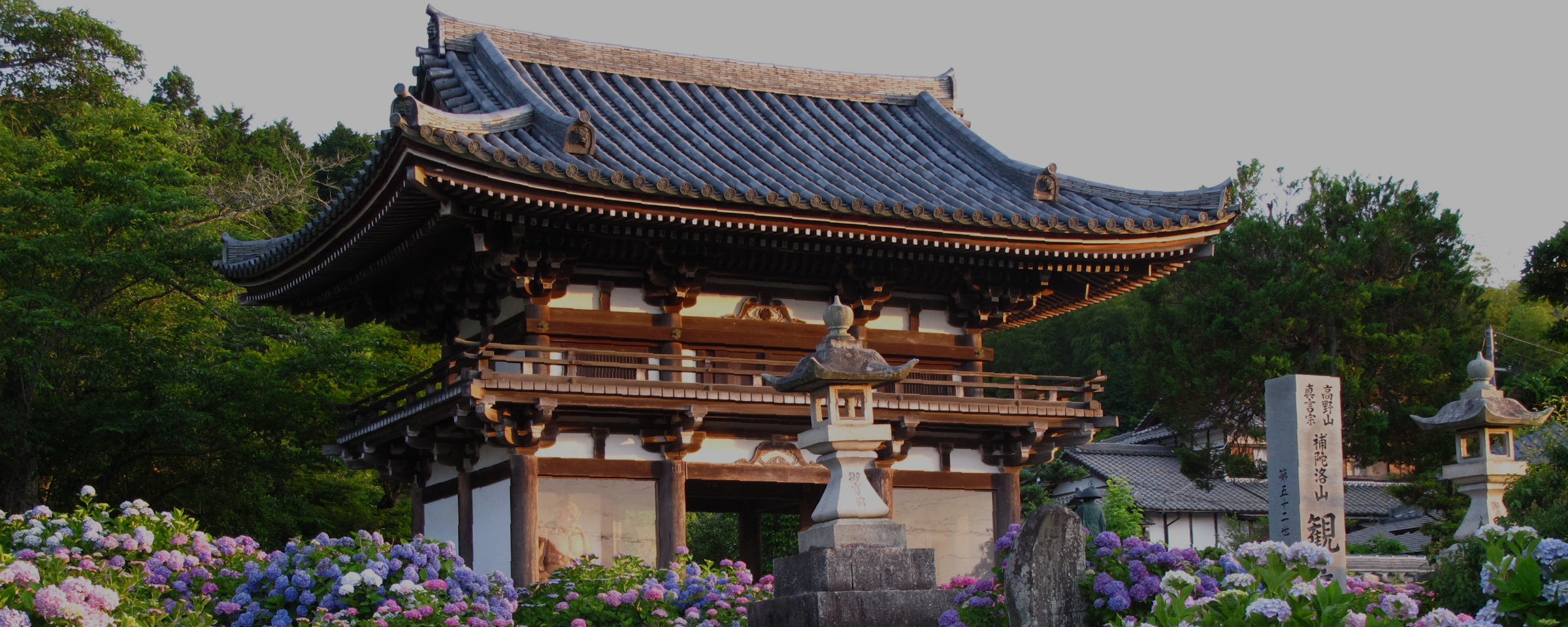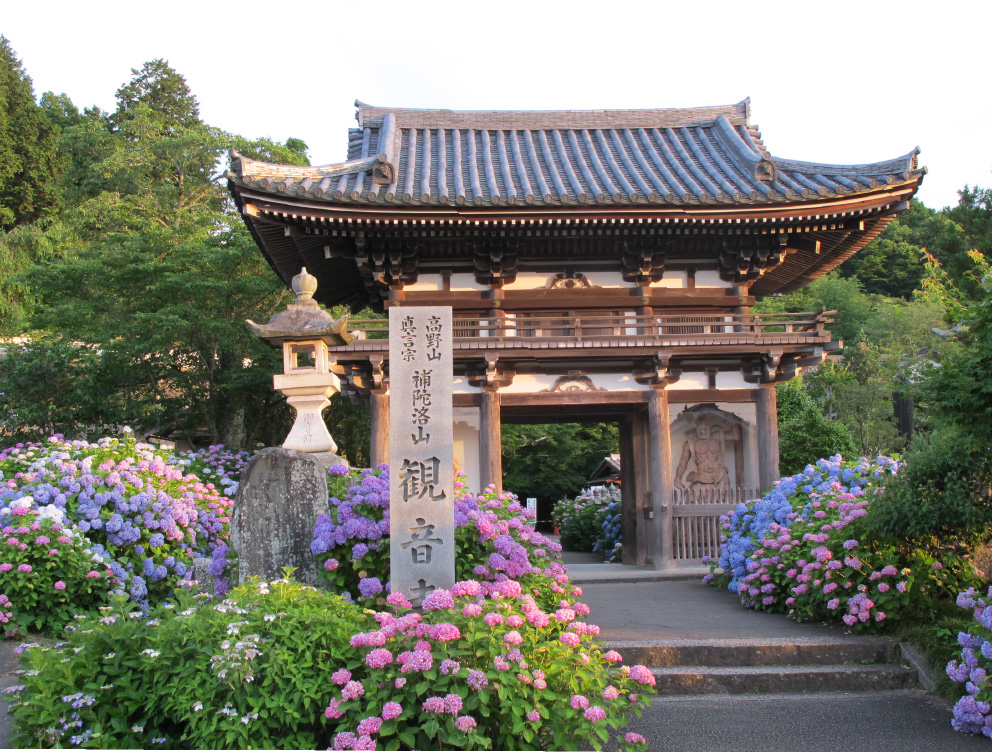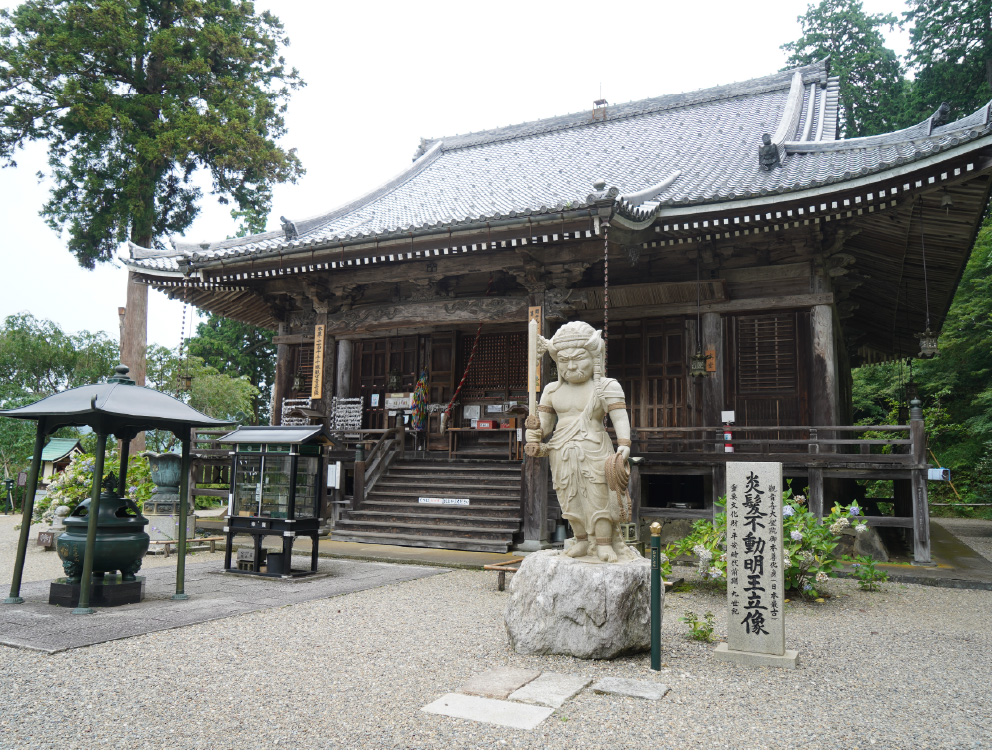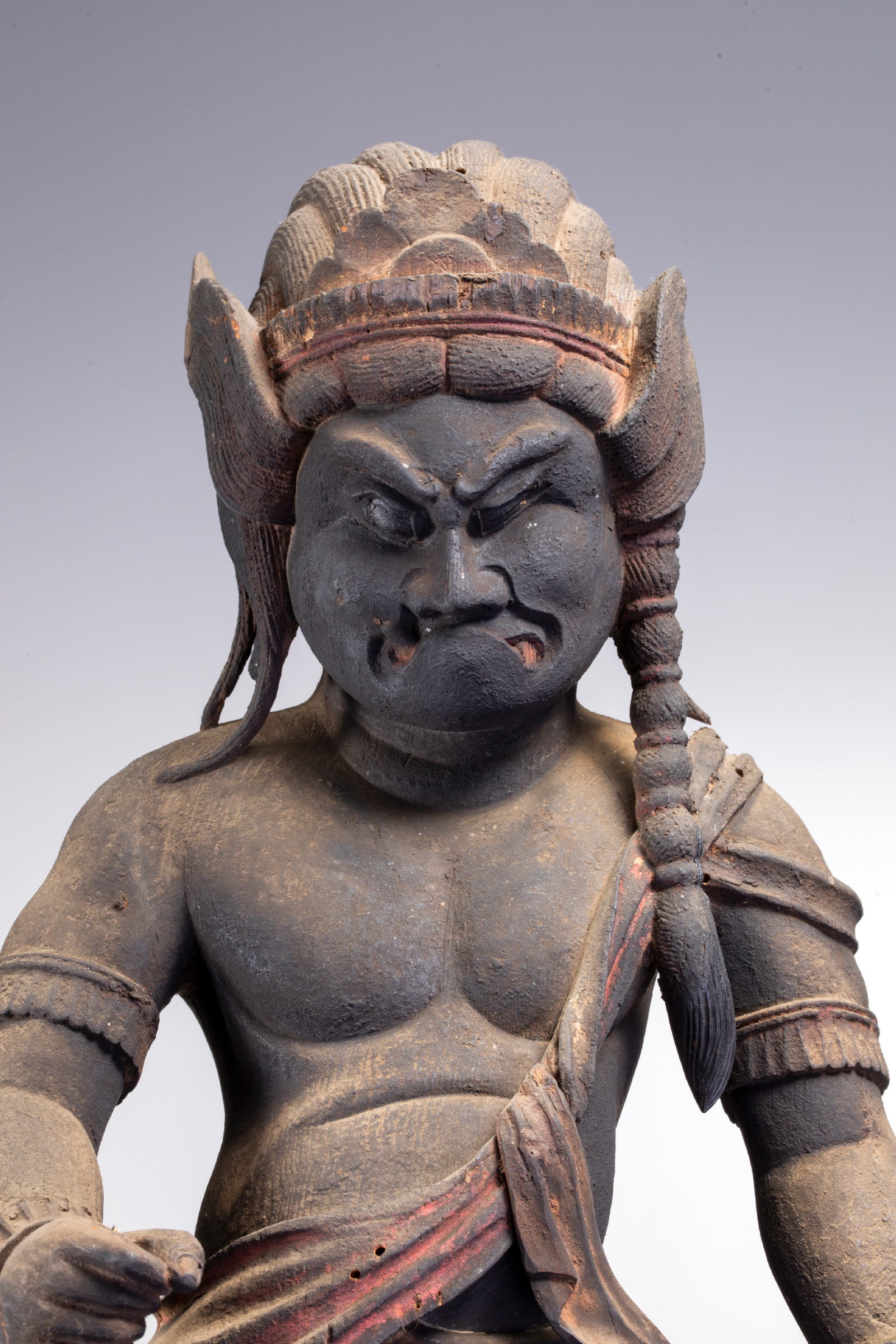Kannon-ji Temple
Kannon-ji Temple was founded in 720. It enshrines Guanyin (Kannon in Japanese), who is traditionally depicted as an eleven-headed, thousand-armed, thousand-eyed bodhisattva of compassion. Seven temple halls were built in 961 under the supervision of the monk Kuya, whose efforts brought the temple back from obscurity. At its peak during the Kamakura Period (1185-1333), Kannon-ji served as the central temple for a network of 25 temples.
Today, the temple attracts many visitors thanks to its wooden statue of the Buddhist deity Acala (Fudo Myo-o in Japanese), as well as its cultural assets and flower beds. In fact, Kannon-ji is known as the “hydrangea temple of the Tamba region” because the grounds are transformed into a flower paradise with 10,000 blooming hydrangeas in 100 varieties from June to early July.
Important Cultural PropertyWooden Fudo Myo-o Statue
The Buddhist deity Acala was originally introduced to Japan (from China) by the famous monk Kukai (Kobo Daishi). This particular wood-carved statue dates back to the 9th century, during the early Heian Period when the imperial capital was established in Kyoto (then known as Heian-kyo).
This statue is the oldest of its kind remaining in Japan, making it an essential part of any study of the history of Buddhist art in Japan, and was designated an Important Cultural Property in 2023. It is carved out of a single piece of Japanese torreya wood. It is characterized by flaming hair, intimidating facial features, and its dynamic pose with dramatically bent waist. The two child figures on either side of it are valuable, ancient Buddhist statues dating back to the Heian (794–1185) and Kamakura (1185–1333) Periods.
-

No. 1 Kannon-ji Temple
(Fukuchiyama City) -

No. 2 Tenneiji Temple
(Fukuchiyama City) -

No.3 Ankokuji Temple
(Ayabe City) -

No. 4 Komyoji Temple
(Ayabe City) -

No. 5 Shoreki-ji Temple
(Ayabe City) -

No. 6 Matsunoo-dera Temple
(Maizuru City) -

No. 7 Kongoin Temple
(Maizuru City) -

No. 8 Taneji Temple
(Maizuru City) -

No. 9 Chionji Temple
(Amanohashidate) -

No. 10 Enjoji Temple
(Kyotango City)




